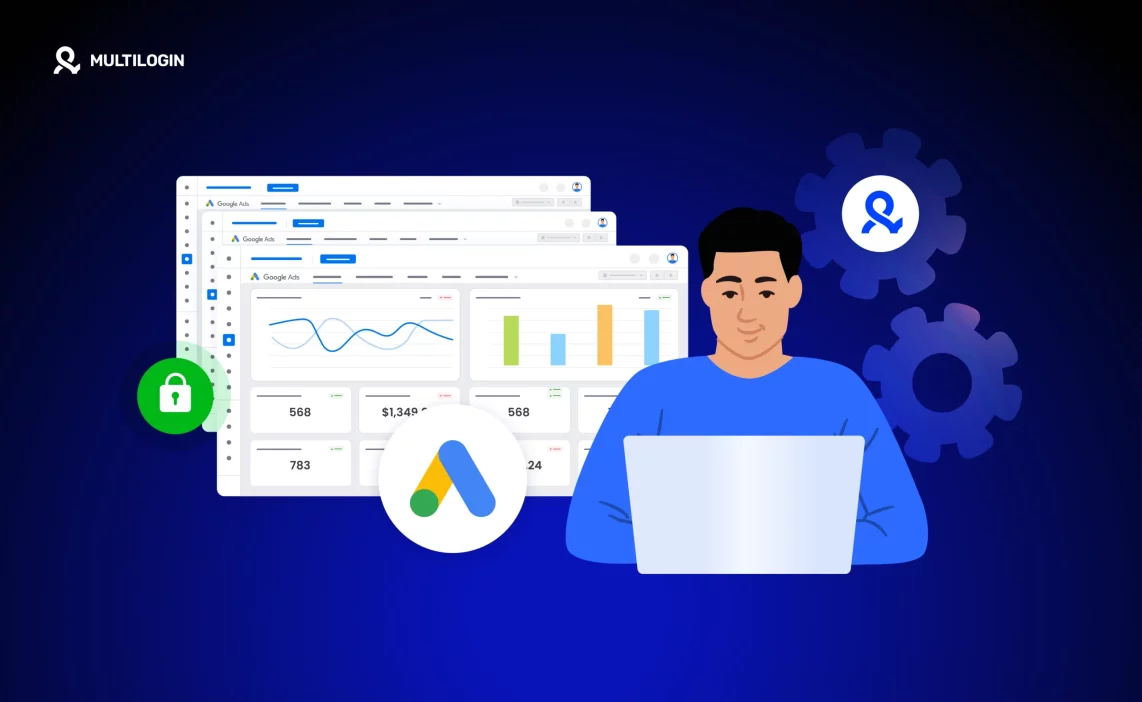Imagine this: your ads are running smoothly, leads are coming in — and then overnight your Google Ads account is suspended. No clear warning, just a short “policy violation” notice. Campaigns freeze, money is lost, and every attempt to restart feels riskier than the last.
Most suspensions aren’t about the ad copy or the budget. They happen because Google links your accounts through hidden signals like browser fingerprints, cookies, and IP history. That’s why quick fixes — new accounts, new proxies, new billing — rarely work. In this guide, you’ll see why accounts get flagged, what that costs your business, and how Multilogin antidetect browser solves the root problem by giving every Google Ads account its own unique online identity.
By the end, you’ll know:
- The real reason new accounts keep getting banned
- Why proxies or VPNs alone don’t solve the problem
- How Multilogin separates fingerprints, cookies, and IPs so accounts look unrelated
- A repeatable setup checklist to run ads safely at scale
Why was the Google Ads account suspended without a clear warning
Google often suspends accounts suddenly with little explanation. Instead of a detailed reason, you get a short “policy violation” notice. Behind the scenes, automated systems connect hidden signals — browser fingerprints, IP addresses, cookies, billing — and if your setup matches a risky pattern, the account gets flagged.
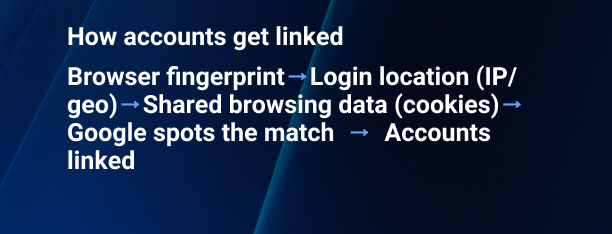
Here are the most common triggers, explained with a practical way Multilogin prevents each one.
1. Multiple accounts share the same fingerprint
Every browser broadcasts a fingerprint: fonts, screen resolution, time zone, graphics rendering, and even how it draws shapes on screen. If two accounts share that same fingerprint, Google’s systems assume they belong to the same operator and suspend them together.
Read the guide: How to spoof browser fingerprint.
How Multilogin fixes it:
Multilogin generates a completely new fingerprint for every browser profile you create. These fingerprints are not just random — they’re based on real statistical data so they look natural to detection systems. For example, one profile might appear as a MacBook in Paris, while another shows up as a Windows desktop in Toronto. To Google, those accounts look like they’re run by two different people on two different devices.
Action steps:
- In Multilogin, click Create new profile.
- Choose a fingerprint template (Windows, macOS, Linux).
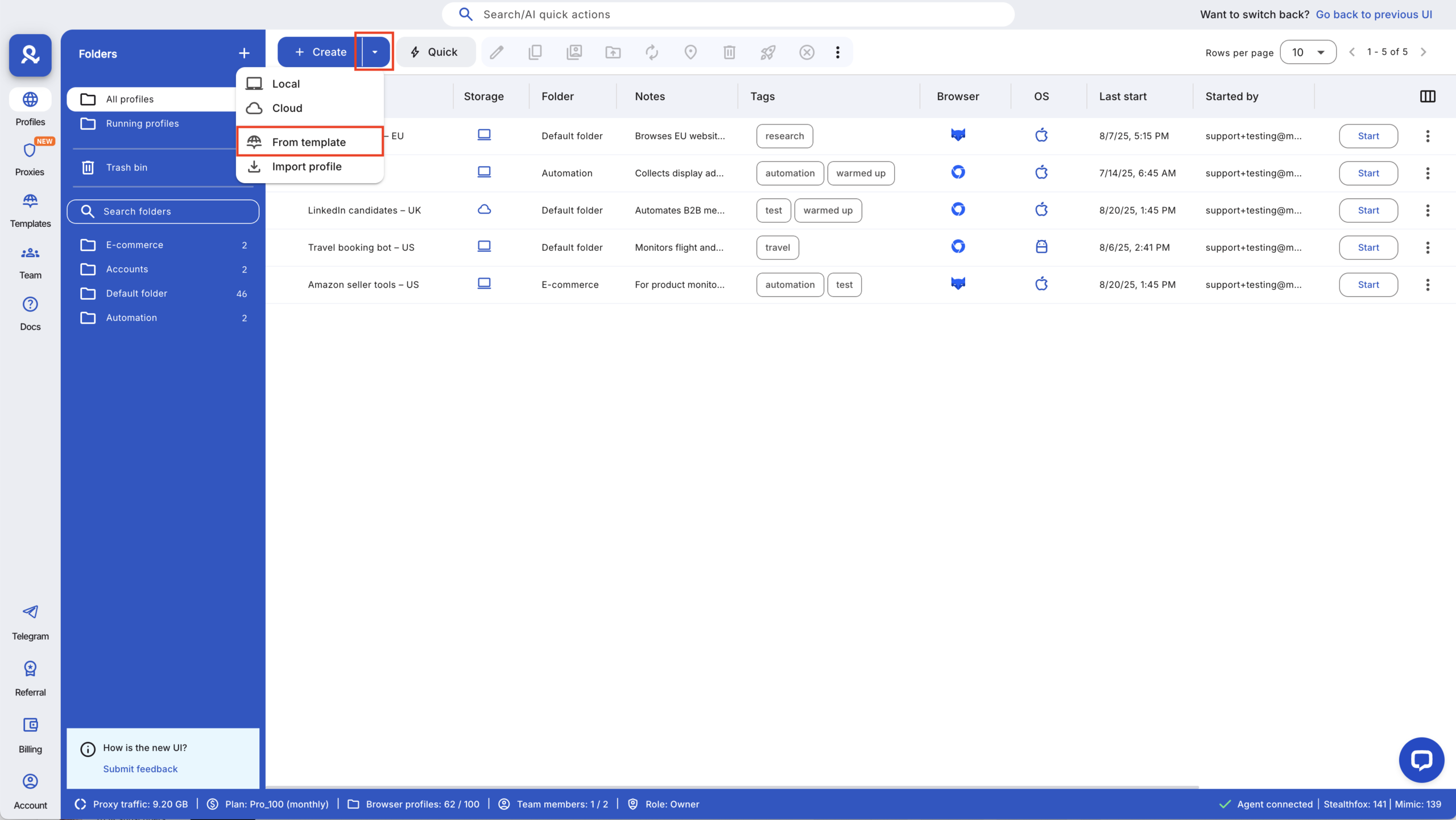
- Save and launch — the profile opens with its own fingerprint, isolated from all others.
Run your ad accounts without interruptions. Start a Multilogin trial for just €1.99.
2. Suspicious IP or geo activity
When you log into the same account from different cities or countries within hours, Google treats it as suspicious. Changing IPs without changing the browser fingerprint often makes things worse.
How Multilogin fixes it:
Every Multilogin plan comes with built-in residential proxies. You can assign one stable, clean IP address to each browser profile so the account always logs in from the same location. If you need geo-targeting, you can pick the exact country or region. This combination — unique fingerprint plus consistent IP — makes your setup look just like a normal single user working from home or the office.
Action steps:
- Open a profile’s Proxy settings.
- Select Residential proxy.
- Pick the geo you want (e.g., US → California).
- Save — the profile now always opens with that IP.
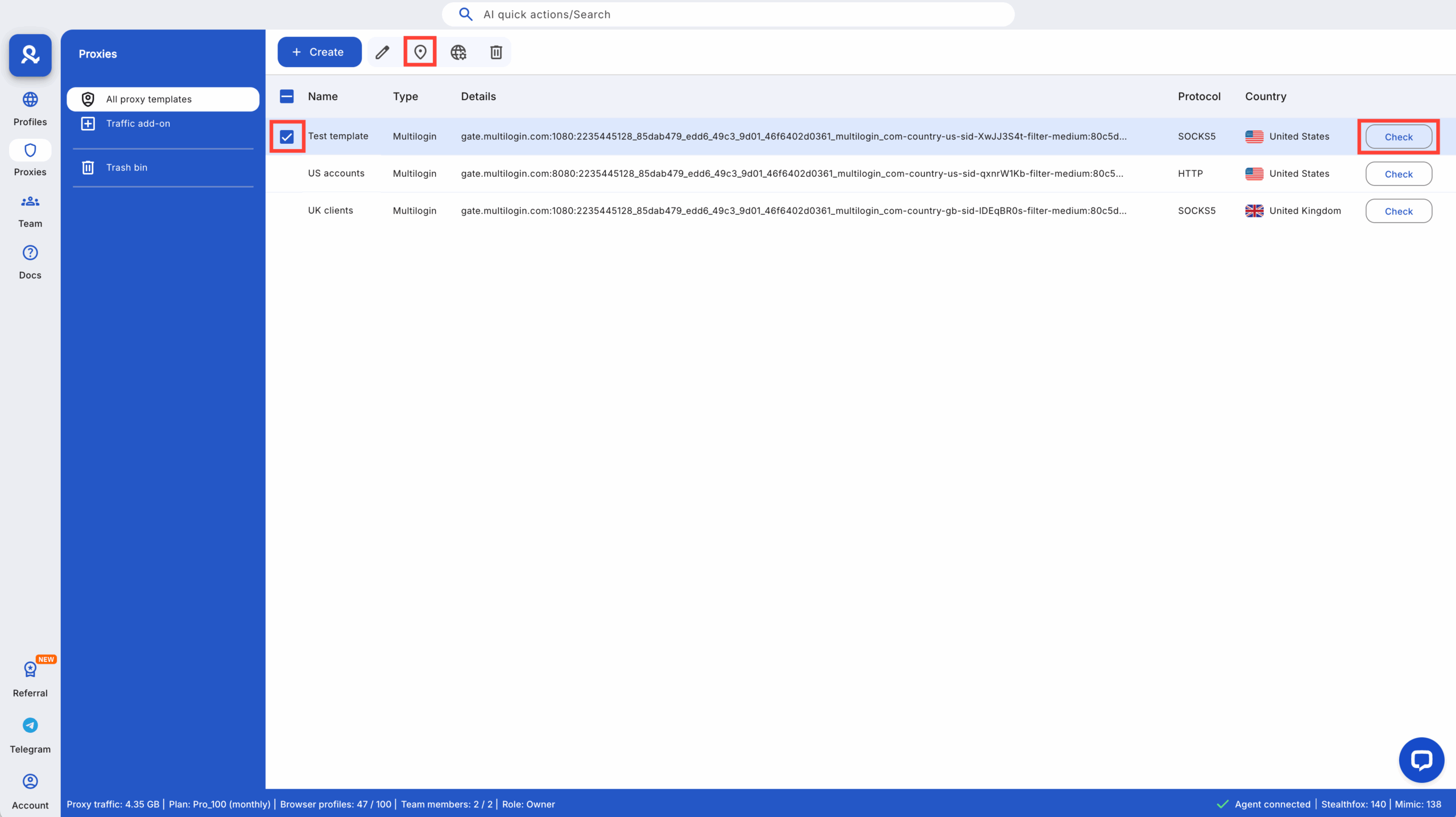
3. Billing details don’t match account activity
Google cross-checks billing details with other signals. Using the same card across accounts, or entering details from the wrong country, can lead to instant flags.
How Multilogin fixes it:
Each Multilogin profile stores its own cookies, cache, and autofill data. That means billing information entered in one profile is completely invisible to another. You can dedicate one payment method to one account without worrying about leaks or overlaps. Agencies managing multiple clients often rely on this isolation to keep each client’s billing separate.
Action steps:
- Launch the dedicated profile for that client or project.
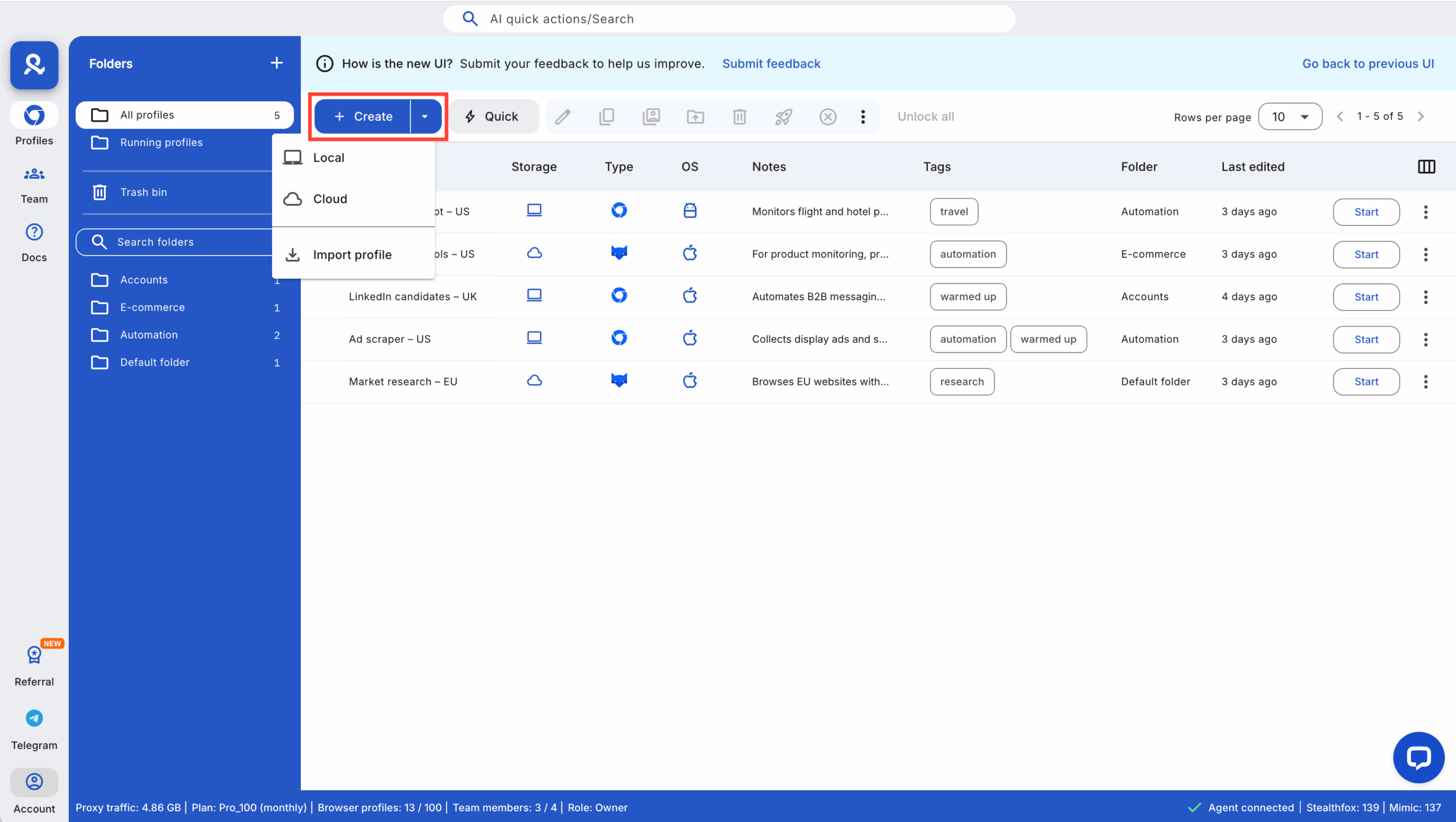
- Enter billing details once inside Google Ads.
- Keep using that profile only for that account — no crossover.
4. Repeated small violations add up
Even if your ads follow most rules, a few rejections can add up. If accounts are linked, one mistake can cascade and get everything suspended.
How Multilogin fixes it:
Profiles in Multilogin act like separate devices. Cookies, local storage, and logins never touch each other. So if one account faces a policy rejection, Google cannot connect it to your other accounts. The risk stays contained inside that one profile.
Action steps:
- Create a new profile for each project or client.
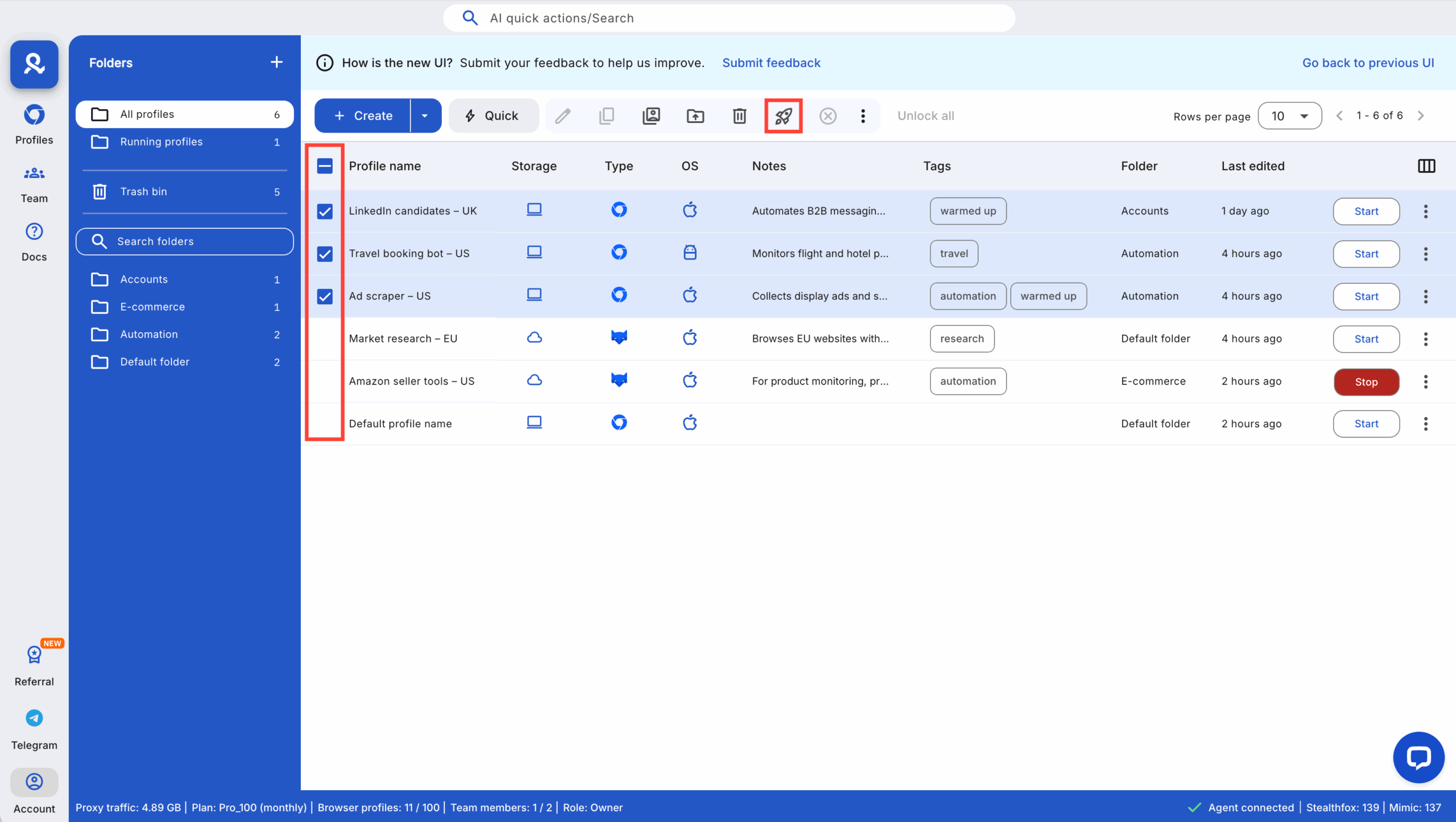
- Label profiles clearly in the dashboard so you never reuse one by accident.
- Keep activity siloed — one profile = one account.
5. Automated patterns look like abuse
If you use scripts or repeat the same clicks across accounts, Google’s system sees it as automated abuse. Suspensions follow quickly.
How Multilogin fixes it:
Multilogin integrates with automation tools like Puppeteer, Playwright, and Selenium. Instead of blasting the same script across accounts, you can randomize actions — delays, scrolls, clicks — while keeping each profile isolated. This lets you scale campaigns without showing patterns that connect your accounts.
Action steps:
- Connect your automation tool to Multilogin’s local API.
- Randomize behaviour across profiles (e.g., time between actions).
- Run accounts in parallel with no shared fingerprints or cookies.
Stop Google Ads suspensions before they happen. Start your Multilogin trial for just €1.99.
What does a Google Ads suspension cost your business?
When your account is suspended, the damage shows fast. Your ads stop. Money goes down the drain. Customers don’t see you. Growth stalls.
Here’s what it really costs you:
- Lost money – your spending is gone with nothing back.
- No sale – traffic, and leads cut off overnight.
- Harder restarts – new accounts get flagged too.
- Plans on hold – launches and campaigns can’t run.
- Lost trust – clients and partners see risk.
Why traditional fixes don’t solve the suspended Google Ads account problem
When your ads account gets suspended, the first thought is usually: “I’ll just make a new one.” That almost never works. Google links things together. The same patterns show up, and you get blocked again.
Why the usual tricks fail:
- New accounts – they get flagged and shut down fast.
- Switching IPs or devices – Google still sees the same digital fingerprint.
- Using proxies only – fingerprints don’t change, so accounts connect.
- Manual workarounds – too slow, can’t scale, wastes time.
That’s why most people end up stuck in a loop: build, block, repeat.
How browser fingerprinting leads to a suspended Google Ads account every time
Every time you go online, your browser gives off details: device type, screen size, fonts, extensions, and even how it draws graphics. Put together, these details form your browser fingerprint.
Google uses fingerprints to spot patterns. If two accounts share the same fingerprint, the system assumes they belong to the same person. That’s how platforms link accounts, even when you use different IPs or create a “fresh” profile.
This is why new Google Ads accounts often get suspended right away. Even if you change the account name or billing details, the fingerprint connects everything. Once the system sees the match, it flags the account.
Google Ads account suspended? Why Multilogin is the best solution to prevent bans
When your Google Ads account gets suspended, the real problem is not the account itself. Google tracks you through browser fingerprints and cookies. Even if you create a new account, Google connects it back to your old setup because the same hidden data shows up again.
This is why quick fixes — new IPs, new devices, or proxies alone — don’t work. The system still knows it’s you.
Here’s how Multilogin prevents bans and keeps your ads running:
Unique fingerprints that can’t be linked
Every browser profile in Multilogin has its own fingerprint. That means fonts, time zone, screen size, and even how your browser draws graphics look different for each account. To Google, they appear as separate, real users.
Profile isolation with cookies and cache kept separate
Normally, cookies (the small files that track your activity) give away connections between accounts. With Multilogin, each profile stores its own cookies, cache, and logins. Nothing overlaps. That means running ten ad accounts looks the same as ten different people running their own accounts.
Pre-cookies for safer account warm-up
New accounts often get banned fast because they look “too fresh.” Multilogin solves this with pre-farmed cookies — aged cookies that show a browsing history. This makes your new Google Ads account look like it has been used by a real person for weeks or months, lowering the risk of instant suspension.
Built-in residential proxies included in every plan
You don’t need to waste time or money buying third-party proxies. Multilogin comes with premium residential IPs, so you can assign a unique IP to each ad account right away.
Automation-ready for scaling
Whether you manage two accounts or two hundred, Multilogin integrates with tools like Puppeteer, Playwright, and Selenium. You can automate campaigns without exposing your accounts to detection.
Tested daily across platforms
Multilogin is not theory. The antidetect engine is tested on 50+ websites every day, including major ad networks. You can run campaigns with confidence knowing it actually works under real conditions.
Case study
- Before: A regional marketing agency lost 2 client Google Ads accounts in one month. The cause was traced to overlapping browser fingerprints and shared billing activity across profiles.
- Action: The agency adopted Multilogin to give each client its own isolated profile. They assigned dedicated residential IPs and warmed up new accounts with pre-farmed cookies.
- After (60 days): Account suspensions dropped to zero, campaigns ran without interruption, and client reporting regained consistency.
This anonymized example illustrates a typical outcome when full profile isolation is applied. Results may vary depending on account history, compliance, and operational practices. Always follow Google Ads policies and applicable laws.
The long-term benefits of using Multilogin to keep Google Ads accounts safe
Running ads is not about short bursts of traffic — it’s about steady growth. The real value of Multilogin shows over time, when your accounts stay alive and your business keeps moving forward.
Here’s what you gain in the long run:
- Stable performance – campaigns keep running without sudden bans that break momentum.
- Room to grow – manage dozens of accounts for different markets or clients without linkages.
- Lower costs – fewer suspensions mean less wasted spend, fewer lost accounts, and less time fixing problems.
- Freedom to focus – instead of firefighting suspensions, you can focus on ads, strategy, and revenue.
When your accounts are safe, you spend less time worrying about platform rules and more time building your business. Multilogin turns ad management from unstable to reliable, giving you confidence to scale at your own pace.
Final verdict of the Google Ads account suspended
A Google Ads suspension is more than an inconvenience — it cuts off traffic, drains money, and slows growth. Quick fixes don’t work because Google links accounts through fingerprints and cookies. That’s why new accounts keep getting flagged, no matter how many times you start over.
Multilogin solves the root problem. With unique fingerprints, isolated cookies, pre-farmed browsing history, and built-in residential proxies, your ad accounts run as if they belong to different people. Add automation and daily testing across major platforms, and you have a stable, long-term way to keep campaigns alive.
If you’re tired of losing accounts and money, the answer isn’t another restart — it’s prevention. Multilogin gives you the reliability to run ads safely, scale across projects, and focus on growth instead of suspensions.
FAQs
Why was my Google Ads account suspended without warning?
Google often suspends accounts without much detail because it relies on automated systems. These systems look for patterns that suggest risk: unusual activity, mismatched billing, or links to previously suspended accounts. The notice you receive is usually short and doesn’t explain every trigger.
How can I find the exact reason for my Google Ads suspension?
You can check the “Policy Manager” in your Google Ads dashboard. It shows the flagged policy, but it rarely gives the full picture. Sometimes the reason is tied to technical patterns like browser fingerprints or cookies, which Google doesn’t openly explain.
Can I appeal a suspended Google Ads account, and how?
Yes. You can file an appeal through the suspension notice in your account. Google may ask for documents to prove your business is legitimate. Keep in mind, appeals often fail if the system has linked your account to banned activity. If you’ve been suspended before, it’s harder to win back access.
How long does the appeal process take?
Most appeals take a few days, but some can take weeks. Even after that, many advertisers are denied. This is why businesses look for prevention instead of relying on appeals.
Can I create a new Google Ads account after suspension?
You can try, but in most cases the new account gets suspended too. Google links accounts using browser fingerprints, cookies, IPs, and billing information. Without changing those, every new account looks connected to the old one. Tools like Multilogin help by giving each account its own isolated environment.
Does Google track multiple accounts and suspend them all?
Yes. If accounts are linked through the same device, IP, or fingerprint, Google can suspend them together. That’s why agencies and advertisers running multiple accounts need strict separation between them.
How does Google connect accounts through browser fingerprints and cookies?
Every browser gives off a fingerprint made up of details like fonts, screen size, time zone, and installed extensions. Cookies add another layer of tracking. When these overlap across accounts, Google treats them as related and blocks them. Multilogin solves this by giving each account a unique fingerprint and separate cookie storage.
Will using a proxy or VPN stop my account from being suspended?
No. A proxy or VPN only hides your IP. It doesn’t change your fingerprint or cookies. Google can still connect your accounts. That’s why proxy-only solutions fail. You need full isolation at the browser level if you want to prevent linkages.
How to fix suspended Google Ads account?
If your account is already suspended, you can submit an appeal, but chances of success are low if your setup looks connected to past violations. The better approach is prevention:
- Use unique browser fingerprints for each account.
- Separate cookies, cache, and logins so nothing overlaps.
- Assign dedicated proxies per profile.
Multilogin combines all these steps into one platform, giving you the environment you need to keep accounts safe long term.
